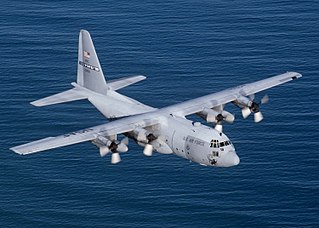
The Lockheed C-130 Hercules is an American four-engine turboprop military transport aircraft designed and built originally by Lockheed. Capable of using unprepared runways for takeoffs and landings, the C-130 was originally designed as a troop, medevac, and cargo transport aircraft. The versatile airframe has found uses in a variety of other roles, including as a gunship (AC-130), for airborne assault, search and rescue, scientific research support, weather reconnaissance, aerial refueling, maritime patrol, and aerial firefighting. It is now the main tactical airlifter for many military forces worldwide. More than 40 variants of the Hercules, including civilian versions marketed as the Lockheed L-100, operate in more than 60 nations.

The Royal New Zealand Air Force (RNZAF) is the aerial service branch of the New Zealand Defence Force. It was formed from New Zealand elements of the British Royal Air Force, becoming an independent force in 1923, although many RNZAF aircrew continued to serve in the Royal Air Force until the end of the 1940s.
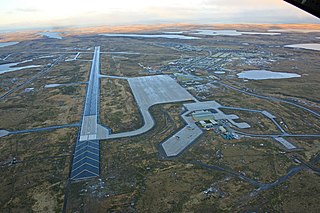
RAF Mount Pleasant is a Royal Air Force station in the British Overseas Territory of the Falkland Islands. The airfield goes by the motto of "Defend the right" and is part of the British Forces South Atlantic Islands (BFSAI). Home to between 1,000 and 2,000 British military personnel, it is about 33 miles (53 km) southwest of Stanley, the capital of the Falklands—on the island of East Falkland. The world's longest corridor, 2,600 feet (800 m) long, links the barracks, messes, and recreational and welfare areas of the station, and was nicknamed the "Death Star Corridor" by personnel.

Royal Air Force Brize Norton or RAF Brize Norton in Oxfordshire, about 75 mi (121 km) west north-west of London, is the largest station of the Royal Air Force. It is close to the village of Brize Norton, and the towns of Carterton and Witney.

Future Strategic Tanker Aircraft (FSTA) is a British project to procure Airbus A330 Multi Role Tanker Transport aerial refuelling (AR) and air transport (AT) aircraft for the Royal Air Force, to replace older models such as the VC10s and TriStars.

Number 216 Squadron is a squadron of the Royal Air Force based at RAF Waddington, Lincolnshire, since reforming on 1 April 2020 and is tasked with testing future drone swarm technology. It had previously operated Lockheed TriStar K1, KC1 and C2s from RAF Brize Norton, Oxfordshire, between November 1984 and March 2014.
Pacific Western Airlines Ltd (PWA) was an airline that operated scheduled flights throughout western Canada and charter services around the world from the 1950s through the 1980s.

Safair is an airline based at the O.R. Tambo International Airport in Kempton Park, South Africa. It operates one of the world's largest fleets of civil Lockheed L-100 Hercules cargo aircraft,

The Short Belfast is a heavy lift turboprop freighter that was built by British manufacturer Short Brothers at Belfast. Only 10 aircraft were constructed, all of which entered service with the Royal Air Force (RAF), who operated it under the designation Short Belfast C.1.

A cargo aircraft is a fixed-wing aircraft that is designed or converted for the carriage of cargo rather than passengers. Such aircraft usually do not incorporate passenger amenities and generally feature one or more large doors for loading cargo. Freighters may be operated by civil passenger or cargo airlines, by private individuals or by the armed forces of individual countries.

Cambridge City Airport, previously Marshall Airport Cambridge UK, is a regional airport in Cambridgeshire, England. It is located on the eastern outskirts of Cambridge, south of Newmarket Road and west of the village of Teversham, 1.5 NM from the centre of Cambridge and approximately 50 mi (80 km) from London.
Cranfield Airport is an airfield just outside the village of Cranfield, in Bedfordshire, England. It is 7 NM south-west of Bedford and 5.5 NM east of Milton Keynes. It was originally a World War II aerodrome, RAF Cranfield. It is now used for business aviation, private flights, and for research and development activities.
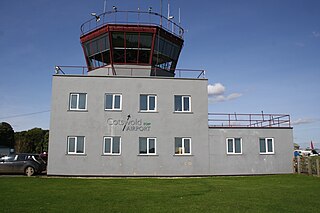
Cotswold Airport is a private general aviation airport, near the village of Kemble in Gloucestershire, England. Located 4.5 NM southwest of Cirencester, it was built as a Royal Air Force (RAF) station and was known as RAF Kemble. The Red Arrows aerobatics team was based there until 1983. Today it is used for the storage and recycling of retired airliners, as well as flying schools, clubs, and industry.

Southern Air Transport (SAT) (1947–1998), based in Miami, Florida, was a cargo airline best known as a front company for the Central Intelligence Agency (CIA) (1960–1973) and for its crucial role in the Iran-Contra scandal in the mid-1980s. During the affair, Southern Air transported arms to Iran and to the US-backed stateless mercenary army in Central America known as the Contras, which were fighting the revolutionary Sandinista government in Nicaragua.

The Lockheed TriStar is an air-to-air tanker and transport aircraft formerly in service with the Royal Air Force (RAF). All are converted civilian Lockheed L-1011-500 TriStar airliners—previously operated by British Airways and Pan American World Airways—and entered service with the RAF in 1984.
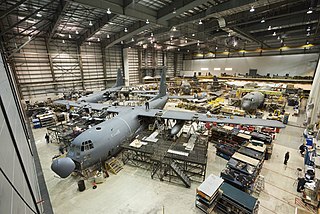
Cascade Aerospace Inc. of Abbotsford, British Columbia, Canada is a specialty aerospace and defence contractor, focused on providing long-term integrated aircraft support programs for Original Equipment Manufacturers (OEMs), military, government and commercial customers.

Tata Advanced Systems Limited(TASL) is an Indian aerospace, defense, military engineering & construction and technology company. It is a fully owned subsidiary of Tata Sons, a holding company for the Tata Group.
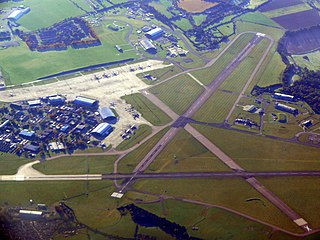
Royal Air Force Lyneham otherwise known as RAF Lyneham was a Royal Air Force station located 6.3 miles (10.1 km) northeast of Chippenham, Wiltshire, and 10.3 miles (16.6 km) southwest of Swindon, Wiltshire, England. The station was the home of all the Lockheed C-130 Hercules transport aircraft of the Royal Air Force (RAF) before they were relocated to RAF Brize Norton.

Boeing UK is a subsidiary of Boeing that operates in the United Kingdom and Republic of Ireland.
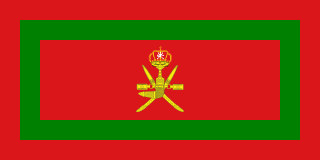
The Royal Flight of Oman (RFO) is the VIP air transport capability embedded within the Sultan of Oman's Royal Household.the Royal Flight is a non-military organisation and part of the Diwan of Royal Court Affairs; it is not part of the Royal Guard of Oman.



















